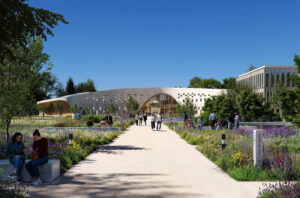As international MBA students return to Australia, there is evidence of a steady growth despite being below pre-COVID numbers. The notion of restoring order in the form of returning to face to face teaching and learning is not a great option – especially now with new strains creating health issues across Australia again.
Online learning saved the day – but at the same time created considerable tension and pressure for a number of MBA Schools. My own institution fared well – thanks to some well needed training, great teaching and a significant investment in technology. So much so that in a recent survey – in T2, 2022 – of MBA students (across two campuses) 98.5% of students would prefer to stay online.
The hybrid model is a good – if not the best – option
What is more likely than a return to F2F is the hybrid model which provides the option for both online and F2F to co-exist – and remain a student choice.
The model is simple in fact. Online teaching continues from a classroom on campus and students can choose to sit in on the sessions or continue to study on line. The notion is based on the television principle – a small live studio audience to give the presenter a better dynamic with a much larger audience watching (and participating) on line.
The model does require some careful thought though and may not be ideal across the board.
Lights, camera – action
The teaching is best achieved on campus using quality technology that ensures top end sound, clear picture and the option of interactivity. At the heart of any learning and teaching scenario – student engagement.
For the students remaining on line (and this is likely to be a significant group) the quality of the delivery – from a presentation point of view is essential. Audio graphics (voice over power point slides) is not going to do it. What is needed is a far more interactive model – not unlike watching television.
The so-called digital convicts (teaching staff forced to go online kicking and screaming) were never selected for their television personae. In many ways this explains some poor ratings in the recent QILT outcomes (Quality Indicators of Learning and Teaching). But, with a bit of coaching and the right environment all staff can achieve good outcomes.
The importance of training
As we move to the hybrid mode (classroom teaching with students online and in the classroom simultaneously) the importance of training staff (and students for that matter) to maximise learner engagement and at the same time enhance the quality of ‘the performance’ cannot be over emphasised.
To expect all teaching staff to ‘light up’ in this environment is unrealistic. What is needed is training and support in order to achieve quality outcomes.
Emeritus Professor Greg Whateley is Deputy Vice Chancellor and Vice President (Academic) at Group Colleges Australia. He is a regular columnist with over 500 publications to his credit. Greg is a keen ‘virtual learning’ supporter and has been for many years. In 2022 he co-founded Australia’s first Virtual Conservatorium which has served as an exemplar for many more recent initiatives.








